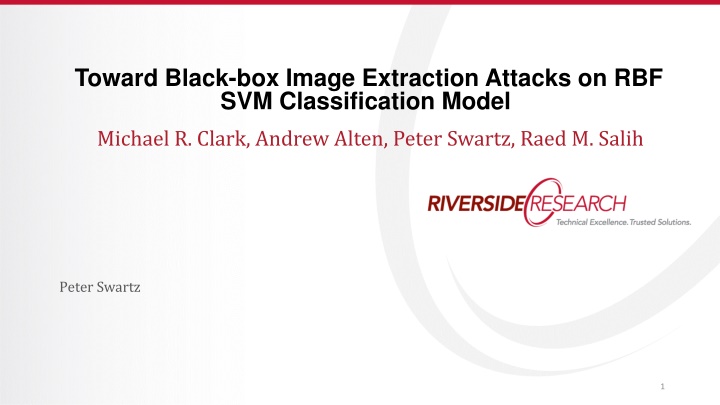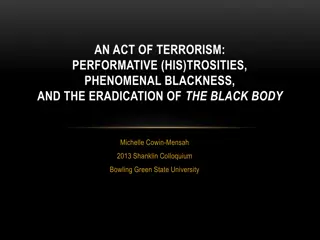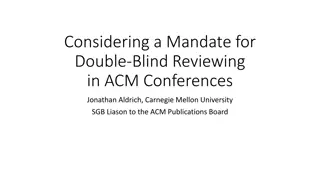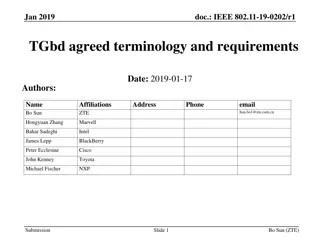
Black-box Image Extraction Attacks on RBF SVM Model
"Explore black-box image extraction attacks on RBF SVM classification model, analyzing vulnerabilities and extracting meaningful information from machine learning models. Learn about defenses and the motivation behind these attacks."
Download Presentation

Please find below an Image/Link to download the presentation.
The content on the website is provided AS IS for your information and personal use only. It may not be sold, licensed, or shared on other websites without obtaining consent from the author. If you encounter any issues during the download, it is possible that the publisher has removed the file from their server.
You are allowed to download the files provided on this website for personal or commercial use, subject to the condition that they are used lawfully. All files are the property of their respective owners.
The content on the website is provided AS IS for your information and personal use only. It may not be sold, licensed, or shared on other websites without obtaining consent from the author.
E N D
Presentation Transcript
Toward Black-box Image Extraction Attacks on RBF SVM Classification Model Michael R. Clark, Andrew Alten, Peter Swartz, Raed M. Salih Peter Swartz 1
Toward Black-box Image Extraction Attacks on RBF SVM Classification Model 1) Introduction 2) Motivation and Problem Statement 3) Preliminary Attack Outline 4) Preliminary Attack 5) Mathematical Explanations 6) Attacks Variations 7) Attack Results 8) Attack Analysis 9) Conclusions and Future Work 2
Introduction Protecting Machine Learning (ML) models Models trained on sensitive information can leak information. The primary attack classes against ML models deception (a.k.a. adversarial examples), model inversion, training data extraction, and membership inference. white-box, gray-box, or black-box access Vector Machines (SVMs) image classification. 3
Introduction Training data extraction attacks Training-based Optimization-based. Extraction of semantically meaningful images the number of training images is low, the inter-class diversity of the images is also low, o Ex: images of the face of the same individual. 4 AT&T Face Database Example
Motivation and Problem Statement Defenses for the various attack (in the literature) Quickly broken or fail to defend o against realistic adversaries. Attacks have not been fully researched and understood o How classifiers under attack behave? The research aims Demonstrate black-box image extraction attacks Develop a deep understanding o Why some trained ML models are vulnerable/others are not Shows attacks can extract meaningful information o More than an average of each class. The research presents Black-box training data extraction attack o On RBF SVM/image classification Model for understanding o Why the proposed attack is successful on the RBF SVM classifier? 5
Preliminary Attack Outline Training a linear SVM on linearly separable labeled training data vectors produces an affine hyperplane defined by ? ? + ? = 0 Where ? is the slope of the hyperplane, and ? is a constant An SVM selects the hyperplane that best separates the data points from each class The figure to the right is an example of 2-D linearly separable training data with the optimal separating line shown This optimal hyperplane is used to make predictions on unseen vectors ?? using a hypothesis function: ? ?? = +1 1 Two class example given above To classify non-linearly separable data, the input space ?? must be transformed into a higher dimension by the SVM This is done using a kernel function (1) https://en.wikipedia.org/wiki/Support_vector_machine ?? ? ? + ? 0 ?? ? ? + ? < 0 6
Preliminary Attack The preliminary attack Iterating over the pixels of a blank image o the same size as the training images for the classifier. attacker finds the pixel value o Maximizes the classifier s confidence (belongs to a specific class) Iterating over all of the pixels o the discovered image is returned. a = n x m matrix of all zeros for i = 0 to n for j = 0 to n bestScore = CLASSIFIER(a) bestValue = 0 for k = 0 to 256 a[i][j] = k currentScore = CLASSIFIER(a) if currentScore >= bestScore bestScore = currentScore bestValue = k a[i][j] = bestValue return a 7
Mathematical Explanations Linear Classifier The confidence values from the SVM classifier come from its decision function ? ? The decision function is a form of equation (1) for the optimum hyperplane in the transformed space The attack targets the class above the hyperplane by maximizing the response from the decision function max ?? ??? ?? Where ?? are test points in the training data space ?? The example to the right shows the attack with data contained in the space ?2 This shows a successful attack where max ?? ??? ?? = 4.45 and ??= ?? The starting point of the attack determines the final location of this line Only one of the points in the training data ?? exists within this region of space Probability that attack returns ??= ?? is low Data dependent 8
Mathematical Explanations Polynomial Classifier Polynomial kernels allow for a slightly higher likelihood of successful extraction This is because of the shapes the transformations create within the higher dimensional spaces Assume the polynomial kernel ? ??, ?? of degree ? is a non-linear map defined by the following function ? ? ??, ?? = ? ?? ?? + ? ? is a constant that controls the curvature of the space ? translates the space along an axis (b) (a) Polynomial kernels allow for a slightly higher likelihood of successful extraction The figure to the right shows an example of a quadratic kernel with ? = 2 The 2-D training data is non-linearly separable in the original ?2 vector space The quadratic kernel transforms the data into a higher dimensional space ?3 9
Mathematical Explanations RBF Classifier Because of the distribution of the training data in the original space, the green class of data gets concentrated within the vertex of the paraboloid The attack against the green class in this space will return a test vector ??= ?? on the green plane with high probability Attacking the red class will fail because of the spreading action of the parabola The RBF kernel is different from the polynomial kernels because it has a radial basis Symmetric around some center point The kernel typically uses a Gaussian function as the basis (b) (a) 2 ?? ?? 2?2 ? ??, ?? = ? Figure (a) is a data set similar to the previous one Figure (b) shows the Gaussian shape of the kernel and the green attack plane 10
Attack Variations This bubbling action around support vectors when the RBF classifier is applied to an ?? resembles the figure to the right Because of this, the attack against any class should return training images with high probability These mathematical insights led us to try different variations of the attack Trying sub set of feature values o every 8th, 16th, or 32nd possible value Making the attack iterable by setting the initial image o better extracted images when combined with other variations Setting couple pixel values o to get a rough extracted image quickly Starting at various places in the image Changing the attack direction of scanning o Left to the bottom right/backward Changing the probability with each iteration o Allow for lower probability Martin D Buhmann, Stefano De Marchi, and Emma Perracchione. 2019. Analysis of a new class of rational RBF expansions 11
Attack Results Multiple Images Extracting Results from a Single Model Single Image Extraction Results from a Single Model Training Image Training Image Extracted Image Extracted Image Images extracted from RBF SVM classifier trained on 200 images per class from CIFAR-10 Five image extracted from a single RBF SVM model trained on 2,000 images per class Training Image Extracted Image Images extracted from RBF SVM classifier trained on 2,000 images per class from CIFAR-10 12
Attack Analysis We extract meaningful images highly similar to a single training image (not just the average of the training images). We were able to recover images even on models trained on thousands of images per class Our preliminary attack was most successful on the CIFAR-10 dataset. where the inter-class diversity is high 13
Conclusions and Future Work Conclusions Highly successful black-box training data extraction attack (on RBF SVM ) Our preliminary attack extract semantically meaningful images Future Work Train SVM on raw pixel images and study feature extraction methods. Test our attack effectiveness in a more practical context HOG method & L2 hysteresis (L2-hys) normalization technique. Run Our attack on: SVMs with linear, quadratic, and cubic kernels o To test its ability to extract training data. Other datasets (Fashion MNIST& CIFAR-100). A neural network model 14
Closing Thanks Dr. Michael Clark Dr. Raed Salih Mr. Andrew Alten Contact Information Riverside Research Beavercreek, OH, United States {mclark,pswartz,rsalih}@riversideresearch.org 15






















